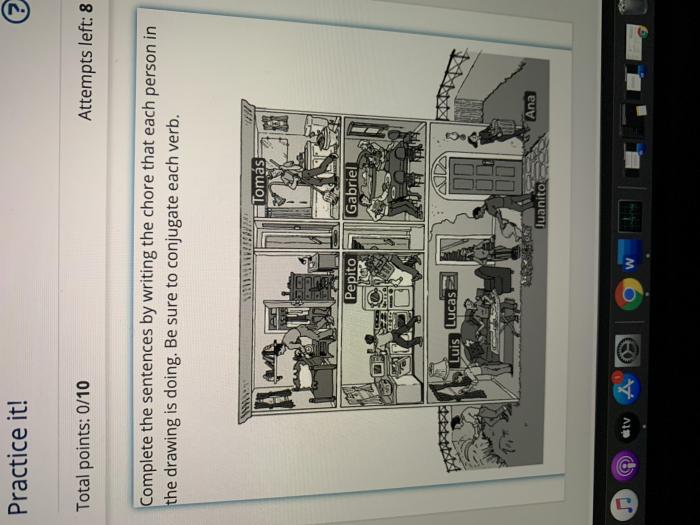Listen and select which statement corresponds to each drawing. – Embark on a journey to enhance your listening comprehension and analytical abilities with “Mastering Listening Skills: Selecting Statements that Match Drawings.” This comprehensive guide will empower you with strategies to effectively process spoken messages, identify key information, and make logical deductions to match statements with corresponding drawings.
Dive into the intricacies of active listening, critical thinking, and visual interpretation, unlocking a world of enhanced communication and understanding.
Through real-life examples and case studies, you’ll witness the practical applications of these skills in various settings. Discover how drawings serve as powerful tools to convey information, facilitating deeper comprehension and informed decision-making. Prepare to elevate your listening skills to new heights, enabling you to navigate conversations with confidence and make well-informed choices.
Understand the Meaning of ‘Listen and Select’

Listening and selecting involves understanding the context of a spoken message and choosing the statement that accurately corresponds to it. This requires active listening, paying attention to key points and supporting details, and using critical thinking to identify the most relevant information.
Strategies for Listening Effectively, Listen and select which statement corresponds to each drawing.
Effective listening involves paying undivided attention, asking clarifying questions, and summarizing the main points. Concentration can be improved by minimizing distractions, using nonverbal cues, and maintaining eye contact.
Identifying Relevant Information
Recognizing key points and supporting details is crucial. Separate facts from opinions and identify biases by evaluating the speaker’s credibility, tone, and purpose. Critical thinking helps determine the most accurate statement.
Using Context to Make Inferences
Using the context of a conversation allows for logical deductions. Background knowledge and experience enhance understanding. By connecting information, inferences can be drawn and meaning can be derived.
Matching Statements to Drawings
Analyzing drawings and identifying corresponding statements requires visual comprehension. Visual cues and symbols convey information. Different types of drawings include diagrams, graphs, and illustrations.
Examples and Case Studies
Real-life examples demonstrate the practical applications of listening and selecting the correct statement. Case studies illustrate the significance of effective listening and decision-making. Drawings are used to convey information and facilitate understanding.
User Queries: Listen And Select Which Statement Corresponds To Each Drawing.
How does matching statements to drawings enhance communication?
Matching statements to drawings fosters a deeper understanding of the message being conveyed. By visually representing key points, drawings help reinforce verbal information, reducing misunderstandings and facilitating more effective communication.
What is the role of critical thinking in selecting the correct statement?
Critical thinking is crucial for evaluating the relevance and accuracy of statements. It involves analyzing the information presented, identifying biases, and making logical deductions to determine which statement best corresponds to the drawing.
How can I improve my active listening skills?
To enhance active listening, focus on paying undivided attention to the speaker, asking clarifying questions, and summarizing the main points. By actively engaging with the message, you improve your comprehension and ability to select the correct statement.

